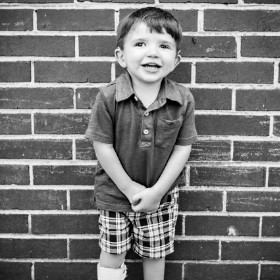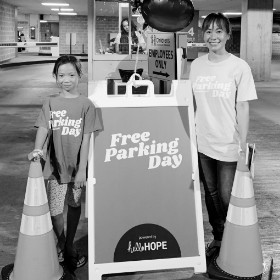Thriving with Type 1 Diabetes: Bailey Lackey’s Story of Hope
Bailey Lackey had just begun Kindergarten when her parents and teacher noticed that something seemed wrong. The normally joyful little girl was beginning to struggle behaviorally: anger, frequent meltdowns, and tears accompanied other symptoms, like exhaustion, thirst, and constant trips to the bathroom throughout the night.
Her mother, Jamie, worked locally at a hospital at the time and had just completed a course on diabetes. Realizing her daughter was exhibiting many signs of the disease, she called Bailey’s pediatrician and asked for her daughter to be tested.
Jamie remembers the doctors told her and her husband, Kenny, not to worry when they brought Bailey in. “They said, ‘I’m sure she’s fine. She looks great.’” But when the the results of Bailey’s urine test were complete, things suddenly became much more serious.
“The doctor came back and said, ‘You have to go to the emergency room.’ Her blood sugar was something like 580 –– we didn’t know what that meant,” Jamie says.
“I had no idea what diabetes was,” Kenny remembers. “I really didn’t know that our life was about to change forever.”
Type 1 Diabetes Diagnosis
Bailey spent the next couple of days in the hospital, where her diagnosis of Type 1 Diabetes was confirmed, meaning that her body was not producing insulin, which is critical for the body to regulate blood sugar levels.
“We got really lucky –– they diagnosed it early,” Kenny says. “She had early symptoms rather than losing a lot of weight and getting very sick.”
Jamie adds: “We didn’t even have a chance to be scared about it, because it was such a short window of time from symptoms to diagnosis.”
The staff at Children’s Healthcare of Atlanta helped to orient the Lackeys to the new challenges and routines they would be facing, while making Bailey feel safe and comfortable. “She thought the hospital was a really cool hotel,” Jamie smiles.
“The thing I remember is the training,” Kenny says. “They give you a ton of training, and it’s all going over your head … it’s a lot of information. You adjust, but leaving the hospital, it’s pretty overwhelming.”
“It’s like having a newborn again,” Jamie adds. “Like when you first go home with a newborn and you don’t know what to do with them.”
Adjusting to a New Life with Type 1 Diabetes
As the Lackeys prepared to leave the hospital, Bailey’s endocrinologist stopped by and asked them what they had planned for the day. Bailey had just begun playing soccer and was scheduled to have practice that afternoon, but Jamie told their doctor they planned to skip it in favor of a quiet day at home.
The doctor told them, “Don’t change anything … go to soccer.”
This advice stunned Jamie and Kenny since their daughter was being discharged from a three-day hospital stay. The doctor encouraged them not to make major changes to daily life, explaining that adjusting to managing her Type 1 Diabetes would be enough transition for all of them and that it was better for things to remain as unaltered as possible.
They faced many daily challenges in learning to help Bailey manage her diabetes, from giving her the first shot to discovering the pharmacy had given her the wrong insulin upon arriving home from the hospital. They called their endocrinology group often for support while they were learning to navigate life with Type 1 Diabetes.
“The first time we gave her a shot, I’ll never forget,” Kenny says. “A little bit of blood came out, and we were like, ‘What does this mean?’ We didn’t know what was normal.”
The reality of Bailey’s constant need for care and monitoring her blood sugar began to set in.
“With diabetes they tell you, ‘It’s manageable, but there are no days off,’” Jamie says.
“It’s not like if she forgets to take her pill one day I can give her two the next,” Kenny adds. “It’s every day, every hour. That was the big adjustment –– that someone was aware of what’s going on every single day. We always had to make sure we had a plan in place.”
Initially, Jamie and Kenny, and especially Bailey, struggled with the temptation to be perfectionistic with managing blood sugar numbers. But their medical team gave them the advice that there are no bad numbers. Jamie explains: “It’s a number. All we are looking at is a number. That number just tells us what to do.”
“The nurses told us when we left the hospital, ‘She can eat anything, you’ve just got to understand how many carbs it is and do the insulin to carbs ratio. Don’t make her different by saying she can’t have this,’” Kenny says.
Finding Support Facing Type 1 Diabetes
The Lackeys quickly realized that they would need support to manage Bailey’s disease effectively. Play dates, sleepovers and even her hours at school needed to be covered. In the early days following diagnosis this was stressful and even scary.
“That was the hardest part: trusting other people to take care of your child, and to do it correctly … it’s still stressful,” Kenny says.
Despite their fears, the Lackeys reached out for support and found it in their community. Friends and family members received training to allow them to check Bailey’s blood levels and administer insulin correctly. Their doctors and nurses provided constant encouragement as they navigated new challenges, and they soon discovered that the nurse at their daughter’s school had a son with Type 1 Diabetes and understood exactly how to help Bailey while she was in class.
“We see God in a lot of it, just based on the people that were put in our lives,” Jamie says.
The Lackeys also found creative solutions to help Bailey normalize her disease and orient her friends and classmates. Disney produced a book series for the Mickey Mouse Clubhouse about Type 1 Diabetes, and for several years Kenny read these books to each new classroom that Bailey entered so that the children would better understand Bailey’s routine. This also allowed her to bond with classmates who had family members managing diabetes.
Bailey herself, now eleven years old, has found support in friends who are diabetic and through programs like Camp Kudzu, a week long camp for children with Type 1 Diabetes.
Life Today with Type 1 Diabetes
Life today for Bailey feels normal. Because of her early diagnosis, the whole family, including Bailey’s younger brother, Sawyer, is now comfortable with the management routine. Additionally, living with Type 1 Diabetes is much more doable than it used to be, thanks to medical advances over the last few decades.
“Managing diabetes used to be very strict,” Kenny says. He explains that a diagnosis once meant following a rigid dietary regimen with no carbohydrates or sugars.
But now technology allows for constant monitoring of Bailey’s glucose levels so that she can immediately make adjustments to her insulin as needed. This allows Bailey to eat a balanced diet without extreme restrictions and to participate in sports and other activities, something which would have been much more difficult for her even twenty years ago.
Bailey wears a glucose monitor on her arm and has transitioned to using an implanted pump to administer insulin, rather than daily shots. She still has to check her blood via a finger prick test many times a day, but her years of this routine make it seem like normal, everyday life.
“She’s very mature about her disease,” Kenny says. “And she’s very independent.”
Hope for Living with Type 1 Diabetes
Though life changed forever when the Lackeys received Bailey’s diagnosis, looking back they feel incredibly blessed by how early her diabetes was detected and how quickly they absorbed managing the disease into everyday family life. The Lackey family now spreads hope by regularly sharing their story with others.
Jamie recalls a recent experience in which a friend asked her for advice about supporting someone whose child was diagnosed with Type 1. “I said to tell her that I promise this is overwhelming right now, but in four weeks, this is just part of life. It’s a lot to take on right now, but four weeks from now this is going to look a lot different. You’re going to be able to breathe again. You absolutely can.
“Every day we see improvements. We haven’t missed a beat. Life is still incredibly livable and normal. Yes, we do different things than other families may have to do, but there’s not one thing that we’ve said no to because she’s Type 1.”
Bailey agrees: “It’s not as hard as it seems. When they teach you in the hospital, everything seems complicated, but if you give it like three weeks, you’ve kind of got it down.”
Both Bailey and her parents have found hope in clinging to the promises of Psalm 73:26: “My flesh and my heart may fail, but God is the strength of my heart.” They face Bailey’s Type 1 Diabetes with optimism and have found hope, not only in success with managing this disease, but also with paying it forward by encouraging and educating others about Type 1 and helping foundations such as Juvenile Diabetes Research Foundation (JDRF) raise money.
Looking toward the future, Bailey says, “I’m hopeful that there’s a cure, but quite frankly, I don’t really care if there is or not.” She explains that living with her disease has helped to form her into the strong and independent girl that she is and has drawn her family closer together. For Bailey, hope isn’t tied to an outcome, it’s rooted in who she aspires to be.
Thank you to the Lackey family for sharing their inspiring story of hope and perseverance with us!

About the Author
Catie Cummings-Morris is a freelance author specializing in non-profit work and food writing living in Chattanooga, Tennessee, with her husband, daughter, and a vegetable garden.
Type 1 Diabetes Resources
If you would like more information about some of the resources that helped the Lackey family in their journey with Type 1 Diabetes, please visit the links below.
Loading...

















